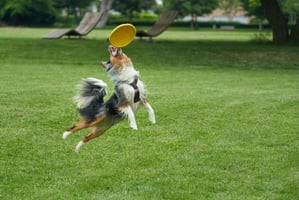Crate training your pup overnight can be a daunting task, but with the right training techniques,...
How to Crate Train Your Puppy: A Comprehensive Guide
Crate training your puppy can be a daunting task, but with the right guidance, it can be done easily and efficiently. This comprehensive guide will provide you with all the information you need to crate train your puppy, so you can enjoy all the benefits that come with it. Learn how to crate train your puppy, the benefits of crate training, and how to do it safely and effectively.
What is Crate Training?
Crate training is a process in which you train your puppy to be comfortable in its crate. This is done by providing positive reinforcement and teaching them to associate the crate with pleasant experiences. The crate is also used to provide a safe and secure space for your puppy when it needs to be left alone. Crate training can be beneficial for both you and your puppy, as it helps to create a safe and comfortable environment.
Crate training is also a great way to help you manage your puppy’s behavior. With crate training, you can establish boundaries for your puppy and teach them what is acceptable and what is not. This will help to prevent problem behaviors from developing, as your puppy will know what is expected of them.
The Benefits of Crate Training
Crate training your puppy can be beneficial for both you and your puppy. For you, it can help to manage your puppy’s behavior and prevent problem behaviors from developing. It can also provide a safe and secure space for your puppy when it needs to be left alone. Additionally, crate training can help to keep your puppy out of trouble when you are not home.
For your puppy, crate training can provide a sense of security and comfort. It can also help to reduce anxiety and stress, as your puppy will have a safe space to retreat to. Additionally, crate training can help to prevent destructive behaviors, as your puppy will learn to stay in their crate when they need to be left alone.
How to Crate Train Your Puppy
Crate training your puppy can be a simple and straightforward process, but it is important to do it correctly. Here are some tips to help you crate train your puppy:
- Make the Crate Comfortable: The first step in crate training your puppy is to make sure the crate is comfortable. Place a soft blanket or bed inside the crate and make sure your puppy has enough space to move around.
- Introduce the Crate: The next step is to introduce your puppy to the crate. Start by placing a special treat or toy inside the crate and encouraging your puppy to go inside. Make sure to praise your puppy when they enter the crate.
- Feed your Puppy in the Crate: Once your puppy is comfortable in the crate, start feeding them in the crate. This will help to create a positive association with the crate and help to make your puppy feel more comfortable.
- Close the Door Gradually: Once your puppy is comfortable with eating in the crate, start to close the door for short periods of time. Start with a few seconds and gradually increase the amount of time. Make sure to give your puppy lots of praise and rewards when they stay in the crate.
- Leave Your Puppy Alone: Once your puppy is comfortable with being in the crate for short periods of time, start to leave them alone for longer periods of time. Start with a few minutes and gradually increase the amount of time. Make sure to leave your puppy with a toy or treat to help them stay occupied.
Crate Training Safety
It is important to keep safety in mind when crate training your puppy. Never leave your puppy in the crate for too long, as this can be dangerous and can cause your puppy to become anxious or stressed. Additionally, make sure to never use the crate as a punishment, as this can have a negative effect on your puppy. Finally, always make sure your puppy has enough space to move around in the crate and that the crate is comfortable and secure.
Conclusion
Crate training your puppy can be a great way to help you manage your puppy’s behavior and provide them with a safe and secure space when they need to be left alone. It is important to do it correctly, however, to ensure your puppy is comfortable and safe. With the right guidance and a little patience, you can easily and effectively crate train your puppy.



